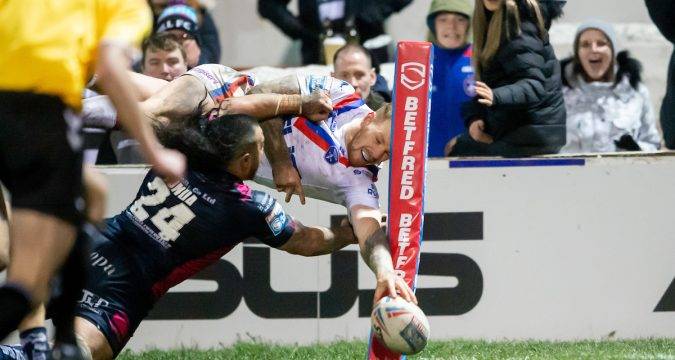
THROUGHOUT Super League’s 27-year history, there have been a number of rule changes introduced to improve the quality and safety of the sport.
Before the summer game began in 1996, for example, defenders were allowed to strike the ball at a ruck, but that was changed as a way of making the sport easier on the eye.
Which five rule changes have been the most important in Super League?
1. No longer allowed to strike the ball at the ruck
Mentioned above, with the advent of the summer game came the rule change that defenders could no longer strike at the ball following a tackle. In an attempt to clean up the sport, organisers believed that such a rule made the game less appealing. Now, if this happens at the ruck, a penalty is given to the attacking team which often deters defenders from trying to force the ball out. In years gone by, the striking at the ruck often slowed the game down and brought with it more scrums.
2. The substitute expansion
In 2003, the substitute pool was increased to a group of four and the number of interchanges a team could make increased from six to twelve. This allowed for coaches to experience with different combinations, but also made the game much more tactical in terms of coaches trying to get one over on their opposite number. A game might have been going one way, but a number of substitutions later and the momentum may have switched. The number of interchanges has since been reduced to eight, but this has certainly become a critical part of Super League.
3. Introducing the 40/20
The 40/20 rule was brought in back in 1999 in an attempt to promote creativity and uncertainty during a game. If an attacking player kicked the ball from within their own 40-metre line and it bounced out within the 20-metre mark, then a 40/20 was judged. This later was tweaked so that if the ball bounced in the 20-metre mark and then went out in the 10-metre mark, it was still head and feed to the attacking side. Many a tremendous kick has been observed since then with the skill of the 40/20 going down well with almost everyone involved in rugby league.
4. The ‘in touch’ rule
Back in 2012, the governing body decided to take the corner flag out of play in terms of a player being in touch. In the act of scoring a try, no longer would a player be deemed in touch if he hits the corner flag. In doing so, since that moment there have been an incredible number of brilliant tries being scored in the corners that would otherwise have been disallowed. The rule change has encouraged speculative efforts and enhanced the quality of the game and the finishing on show.
5. Concussion
Gone have the days when rugby league players could be knocked out and given the magic sponge to then regain their feet in the attacking or defensive line. Following symptoms of concussion, players initially had a seven-day protocol to return before that was increased to eleven and then twelve ahead of the 2023 season. In the modern age, more emphasis has been placed on improving safety and the concussion protocol is arguably the most transformative ruling in the sport’s history.
Click here to purchase a digital edition of League Express.
Click here to purchase an online edition of League Express through pocketmags.com.
Click here to listen to our new League Express Podcast.
League Express is widely available from local newsagents across the north of England.
